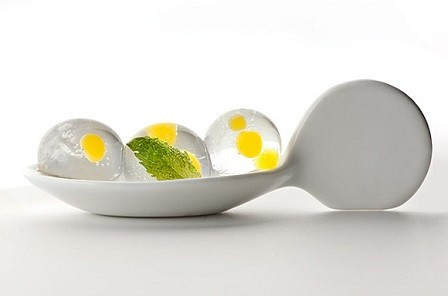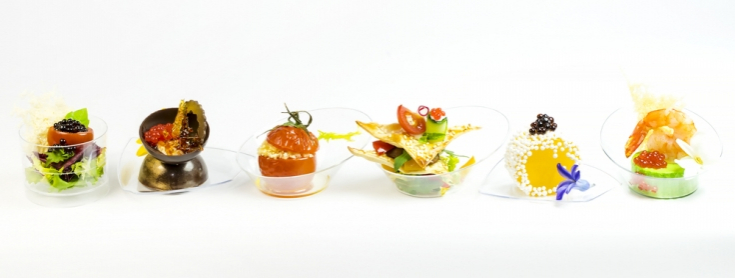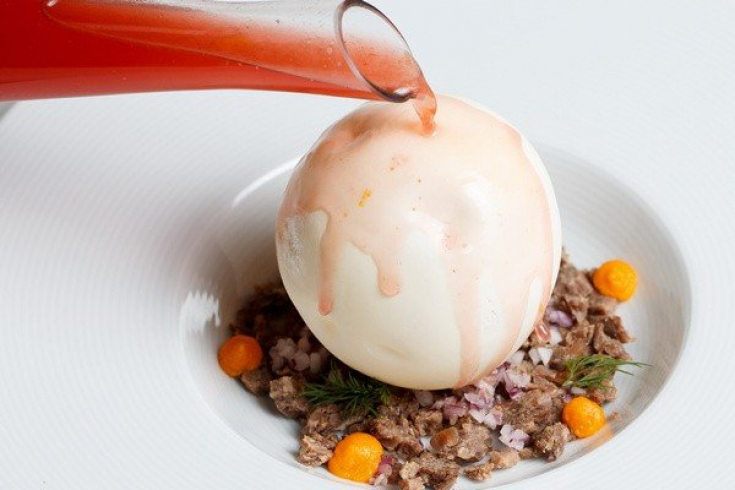The term molecular cuisine has appeared not so long ago, but many gourmets have managed to appreciate its superiority. Establishments offering unusual dishes are popular. What is unusual about this trend in cooking? The main task – it is to surprise or to some extent amaze, and not to feed, as many of us are used to.
Meat sweets or coffee with garlic will delight guests, and the unusual taste will be remembered for a long time. In developed countries, molecular cuisine is gaining momentum, because a person likes not only to see, but also to try something new.
estet-portal.com will tell about the basic cooking techniques and dishes that you can create without leaving your home.
Molecular cuisine: what is the idea and process of cooking
As mentioned, the vocation of molecular cuisine is to amaze. For this, chefs try to make the products familiar to everyone acquire an atypical appearance. Modern technologies make it possible to cook one product and pass it on to another, and you can tell the difference only by tasting a masterpiece. For example, fish served as a cake changes the usual perception of food, because the taste does not match the appearance.
Read also: Molecular recipes: the goal – surprise and amaze
Cooking molecular dishes – it's not easy, it's a kind of experiment. Therefore, the usual pots and pans are not needed. But beakers, test tubes and various electrical appliances – indispensable utensils during cooking. Restaurants and cafes cook on convection stoves and do not use dyes and preservatives.

Molecular cuisine: what techniques are used in cooking
Give an unusual look to a familiar product – it's not an easy task. There are certain techniques that allow you to transform dishes in the cooking process:
• espumization, which consists in turning any product into foam thanks to soy lecithin, while preserving the natural taste of the dish;
• emulsification, which allows you to turn the product into a liquid, – so from the usual vinaigrette you get an excellent sauce;
• gelification, which involves turning any ingredient into jelly;
• vacuum technology consists in obtaining a rich taste of the dish by cooking in a water bath, while using vacuum bags.
Read also: Health Benefits of Agar-Agar: What the Supplement Treats
Dishes of molecular cuisine: egg and beets in a new role
It is unlikely that you will be able to repeat the recipe from the chef of the new direction of cuisine at home, in some cases special conditions are needed. But many recipes are quite affordable in ordinary home conditions, they do not require additional skills or Mediterranean ingredients.

If you want to surprise your guests, then try making a fudge egg. To do this, break the egg in a saucepan with water and put in the oven for 2 hours at a temperature of 50-60 degrees. As a result, you get the most delicate texture with the taste of an egg, which is easy to fill in a pastry syringe and serve on a sandwich.
In an unusual way, you can serve beetroot by making a delicious roll from it. Take two beets, cream cheese – better spicy (250 g) and agar-agar. Grind the beets in a blender, strain and add a sachet of agar-agar, bring to a boil, and then wait for the juice to thicken a little. Pour into a large dish in a thin layer (pre-lay with cling film) and wait until the jelly has cooled. Then spread the cheese in a thick layer and roll into a roll, cut with a sharp knife before serving.
Read also: 10 curious facts about modern molecular cuisine
Orange spaghetti and coffee meat: unusual dishes
To surprise guests with orange spaghetti, mix orange juice (2 cups), orange syrup (25 ml), sugar syrup (75 ml) and gelatin (25 g). Heat until it boils, and then draw the mixture into a syringe. Fill a flexible silicone tube with the solution, the one sold in pharmacies will also work. Dip the tube for a couple of minutes in cool water, connect the syringe to the tube and use air pressure to try to squeeze the spaghetti out of the tube.
Coffee meat will look no less unique on the table. Ingredients:
• pork neck – 1.5kg;
• espresso – 1 cup;
• ground coffee – 2-5 years;
• coffee oil – 50g;
• pepper, salt.
Prepare the espresso and let it cool down. Mix ground coffee, oil, salt and pepper to make a paste. Take a syringe and inject espresso into a piece of pork, and externally rub the meat with the prepared pasta. Place the meat in the bag in which they are roasting, close it tightly and place in a pot of boiling water for 2 hours. The cooled coffee meat is cut into portions.

Molecular cuisine – this is a unique art, where chefs act as inventors, and the kitchen becomes a laboratory. Everyone can create a masterpiece if they make an effort and allocate a little more time for cooking.
Read also: Molecular cuisine at home – it's real






Add a comment